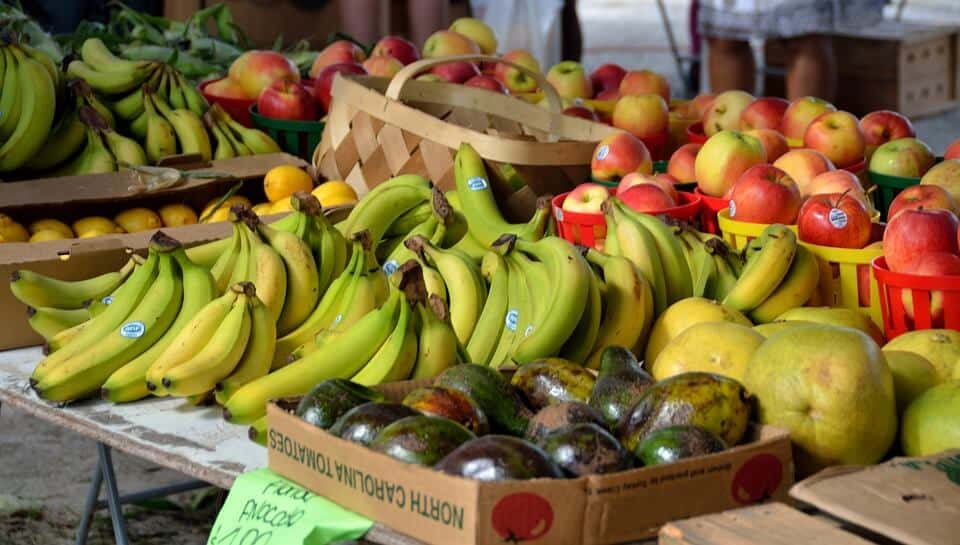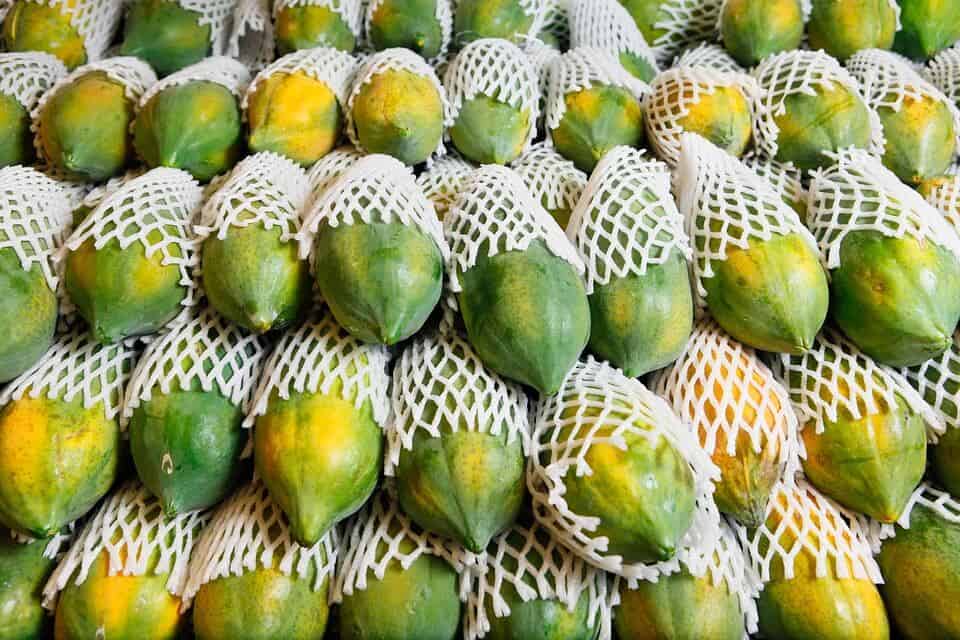I’ve been getting a lot of emails lately. They have all been about the fresh export market.
And most of the individuals have been asking this exact same question; is the fresh export market better for beginners?
Well, I just thought it would be helpful to answer that question today in a post.
My short answer, it’s not.
Long answer, read on.
7 Proven Reasons Why You Should Sell your Crops Locally Before Going Export
 It's important to start locally and then progress to high-end international markets.
It's important to start locally and then progress to high-end international markets.1. Quality Expectations of the Fresh Export Market
When you’re just starting out on anything, your first attempts will always be futile. That’s a fact of life.
Similarly, when you are just beginning out with your Agribusiness, the quality of your produce will be anything but good. That’s not good at all for the fresh export market that requires high quality standards.
For example, In Kenya, the fresh produce for export is classified into several quality standards. These classifications include;
- Extra class – considered being top quality.
- Class 1 – good commercial quality.
- Class 2 – reasonably good commercial quality.
- Class 3 – fit for consumption.
These classes are separated by quality factors such as uniformity of the produce, color, degree of damage or lack of, shape, and maturity.
It’s important to note, attaining some of these quality standards has a cost implication. Most beginners don’t have the budget to go around spending on producing top notch quality.
My Verdict:
As a beginner, your best option would be to grow and sell locally. As you become more experienced with growing, the quality of your produce will improve with time.
And as such, you develop the experience and acquire the necessary investment to target the competitive, fresh export market.
2. Documentation and Records Keeping
Documentation and record keeping is insignificant in farming, right?
Not exactly.
Just like quality, record keeping and documentation is of paramount importance in the export business.
In fact, the international export market doesn’t compromise with proper record keeping. Documents will help you to trace the origin or the source of your produce should anything go wrong.
If you fail to keep legible records, you won’t have an export business.
Sadly, most local farmers don’t keep records or document their operations at all. Beginners are even worse.
My verdict:
Take time to learn the vital records you should keep.
Start practicing professionalism with your local clients. Keep records of small expenses and all your operations.
Again this is just one of the reasons why beginners should take baby steps before going international or even regional.
Related: How to Export Fresh Produce from Kenya
3. Anticipated Expenses
Here’s where it all boils down to.
Most of my clients are fired up at the thought of establishing and running an export start-up.
But the zeal eventually wears off when they realize how intensive the investment becomes.
When you’re starting any kind of business, the investment upfront is always draining. And bearing in mind that nothing comes in, you’re bound to get discouraged.
Exporting of fresh produce isn’t exceptional.
First, you need to pay somebody to help you with the marketing to acquire your first overseas client. That’s if you can’t do it yourself. Which again takes time.
Then, you need to invest in growing high-quality safe crops, harvesting, sorting, grading, precooling, transporting, packaging, paying huge bills, and labeling.
All these stuff requires a significant amount of money to acquire or put into place.
Not only that,
You also require several people on the payroll to facilitate some of the operations.
As if that wasn’t costly enough for you, there’s another cost. Probably higher than all the other expenses.
It’s called freight cost.
Freight charges and handling expenses of your shipment at times doubles your cost of production.
This on its own, is the single-most greatest barrier to entry into targeting the fresh export market.
When you finally calculate your unit cost, it’s just crazy.
4. Desired Profit Margin
Now, why should you be bothered by a higher unit cost?
After all, selling to the international market fetches decent prices, right? Sure, you might get better prices. But there’s only one problem,
It’s the profit margin.
Under the best case scenario, you’ll get a very small and maybe insignificant profit margin. Or under the worst scenario, get back into your pocket to deliver.
With freight charges sometimes exceeding the cost of production, the profit margin narrows significantly.
Is it worth it?
My verdict:
Only big sharks with deep pockets and some experienced Agri-businessmen can swim in the fresh export market.
If you’re a newbie, keep off or you will be swept away by the current.
It’s much cheaper to grow your crops for the local market, gain the required financial muscles and then exporting will become a breeze!
Locally the profit margin can be broadened by targeting far markets within the country.
Instead of paying for exorbitant freight charges, hire an insulated truck and transport your produce to an area of deficit.
5. Compliance Implications
Maybe you strongly believe that the quality of your produce is out of this world, and that you have deep pockets enough to meet all the expenses, and that you don’t have a problem with small profit margins.
Sure, the fresh export market might just be the thing for you.
But before you get all excited,
Do you have what it takes to comply with international market standards?
Well, sometimes it’s easier on paper but the truth is,
International standards are harder to attain than most people want to admit.
First, there’s the Kenya GAP, an FPEAK standard. Then there’s the Global GAP, then HAACP – a management based system. Produce Conformity certificates issued by plant health inspectorates.
There’s the Maximum Residue Level (MRLs) that ensures your crop is free from pesticide residues and other contaminants.
And those are just a few basic requirements that you must comply with.
There are other niche based standards such as Ethical Trading Initiative (ETI), BRC global, and UNECE that are also very important standards to comply with.
My verdict:
As a beginner start locally.
Act responsibly and sustainably in all your operations. If you’re in Kenya, start with Kenya GAP or whatever local standards applicable in your country.
This will help you to avert the higher cost of compliance when starting out, as well as give you an edge later on when you go export.
6. The Risk Involved
If you risk nothing, expect nothing.
However, it’s always wise to take calculated risk to avoid losing your investment. As they always say don’t invest money that you can’t afford to lose.
The export market is no doubt very lucrative owing to the fact that the risk is equally higher.
For example, if your produce gets intercepted in the destination market, the whole shipment will be confiscated.
As if that’s not enough, a fine might just be slapped on you.
Now, let me put that into perspective.
If you lose 1kg of produce locally, you might just lose, let’s say of $0.50.
On the other hand, if the overseas market confiscates the same amount of produce, the total money lost might be as much as $1.50 due to the initial cost of investment.
Besides, sometimes, several factors might play out that you have little to no control over.
For example, political turmoil in destined countries or fluctuation of foreign currency will definitely affect your local business.
Here's the Verdict:
Beginners should keep away from this risky investment and instead focus on the local market.
No matter how tempting the fresh export market is, stick to your plan and only make a move when you’re well prepared.
Related: What Most Agribusiness Experts Won't Tell You
7. Consistency in Production
The export market for fresh fruits and vegetables can be likened to a marathon.
It requires a higher degree of consistency in supply. Without a fast-paced large-scale production system, you cannot consistently meet the demand.
Moreover, that kind of consistency requires a higher budget, which is a hindrance to most beginners.
My Verdict:
Locally, you can produce just as much as you require to sustain your nutritional and financial needs.
You can comfortably do this at your own pace.
Conclusion
In summary, mine isn’t to discourage anyone from exporting their fresh produce. I’m merely helping you to approach the whole fresh export market with realistic expectations.
You’ve just read the 7 proven reasons why it’s always a good idea to conquer local before going international.
- Quality expectations of the fresh export market are higher
- Documentation and records keeping are necessary
- Anticipated expenses
- Know your desired profit margin
- Compliance implications
- Understand the risks involved
- Consistency in production and supply is key
I believe that you’ll now approach the export business with sound expectations.
Editor's Note: This post was originally published on September 18, 2016 and has been revamped and updated for accuracy and comprehensiveness.

you have got to make a priorization of products for the export market…on economic basis, quality local productivity, costs, international demand….
That’s right
You did not mention the sharks that contract you then after selling they claim the consignment was rejected and eat all your sweat!